For others, it’s the familiar battle to get kids to turn off lights in their bedroom or reminding family members not to crank the A/C down so much in the summer. Most of the electrical usage in our daily lives is taken for granted when you never have to consider how much you're actually using or if you need to preserve so things work properly the next day. How many watts does a charging cell phone use? How long can we power 2 laptops, the refrigerator, and keep the lights on? There are plenty of ways to cut energy costs and increase efficiencies in your RV, but one of the ever-increasing necessities in our electrically powered world is energy storage and power consumption.
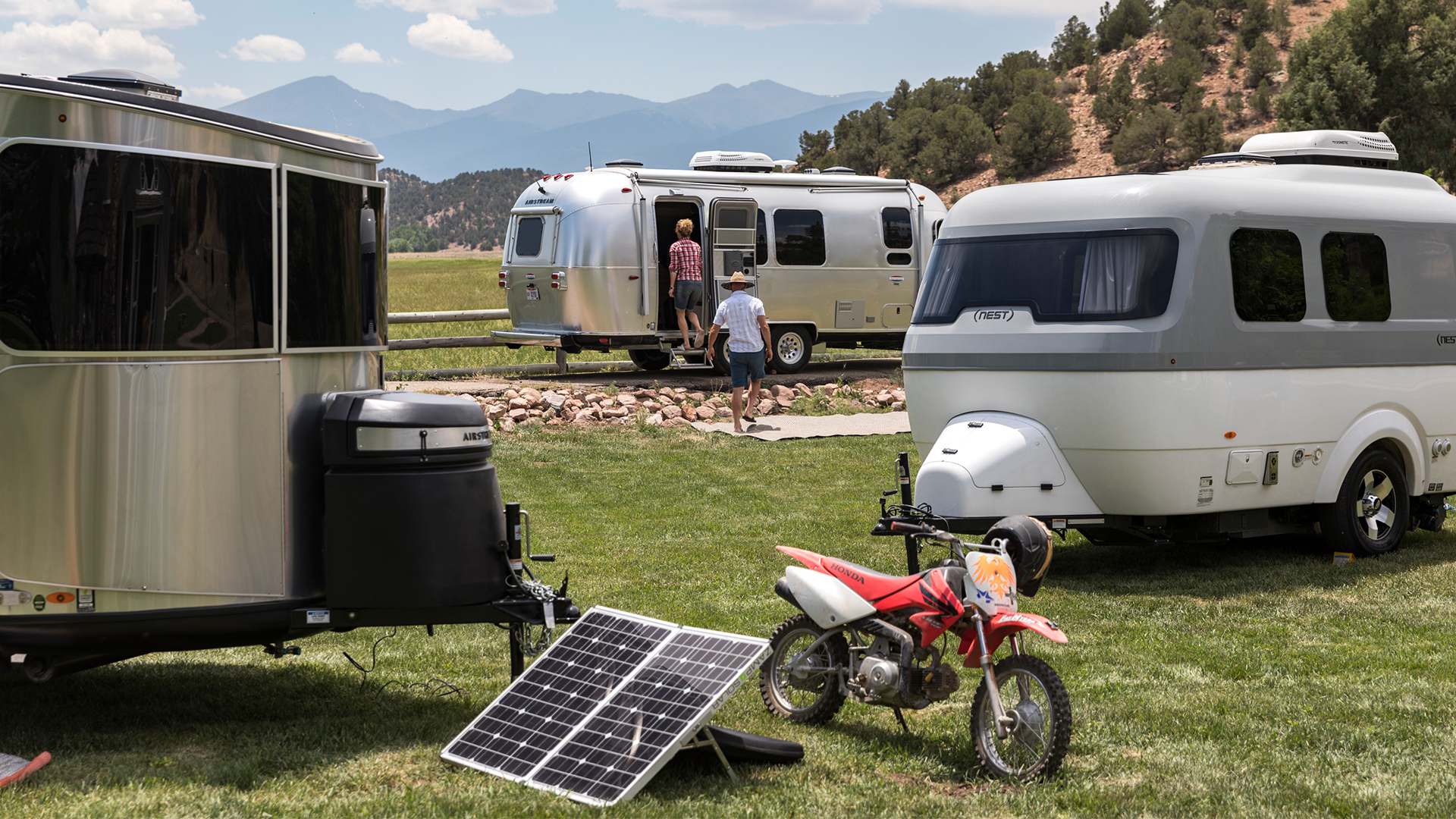
The good thing is that it’s not that hard and plenty of Airstreamers have traversed this path to understand exactly how to use their battery to its full potential and how to effectively plan when they need to connect to a shore power electrical hookup. With a little knowledge and a healthy dose of experience, you’ll be an electricity conservation pro before long.
Watt Does This All Mean?
Amps x Volts = Watts... ahhhh, great thanks…but what do I do with that? Well, some like to use the "water analogy” to help paint a mental picture of energy. Amps are the amount of water (or flow rate), while volts are similarly compared to the water pressure. The two go hand in hand and when you put them together you get the total power, otherwise known as watts.
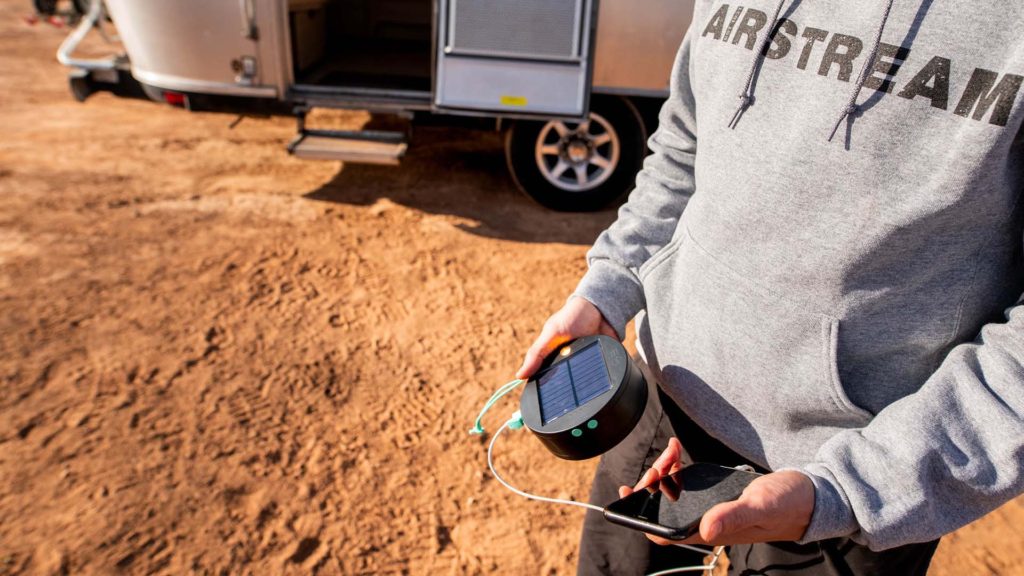
Airstream Ambassadors Aaron and Christine Willers are a power savvy couple who love to boondock in their Airstream Interstate. They have a great analogy to help understand power consumption:
"Recently, I was daydreaming more about this analogy and it got me thinking about a different way to explain the relationship between amps, volts, and watts using a common electrical component many of us use daily: Our cell phone chargers. If you look at your current phone charger (we'll use my Samsung as an example), chances are you'll see Output 5V, 2A. If you go back to our equation above, you get a power rating of 10 watts (5 volts x 2 amps = 10 watts). Now, that's up from older chargers that used to be 5V at 1A, but as technology advances our power-hunger increases also.
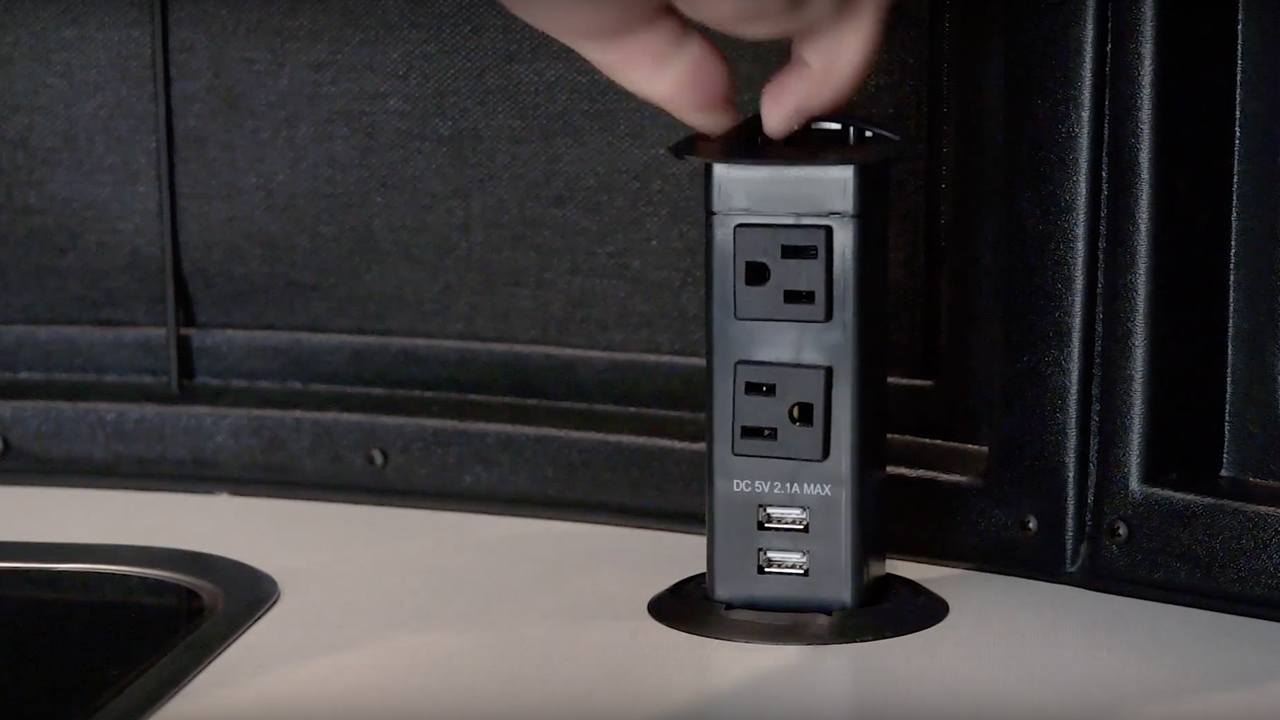
New chargers have come out with something called Fast Charging, which increases the voltage to 9 volts but lowers the amps to 1.5. So, even though you lower the "flow" (current) of electricity from 2 amps to 1.5 amps you get a higher power rating by increasing the "pressure” from 5 volts to 9 volts. This gives a higher power rating of 9 volts x 1.5 amps = 13.5 watts. That provides 35 percent more power than before!"
Awesome! But...how do owners conserve more power while running off of our onboard RV batteries?
Running Appliances Off Your 12-volt Batteries
While you might hear some battery capacities rated by watt-hours, most likely you will hear the term amp-hours. A “100 amp-hour battery” would be the same as a 1200 watt-hour battery (100 amps x 12 volts = 1200 watts). It gets even more complicated when you find out you should only use about 50% of your lead acid or AGM batteries before they can become damaged. Since most appliances are rated in watts, you can use the same equation above in reverse to see how long you can run certain appliances.
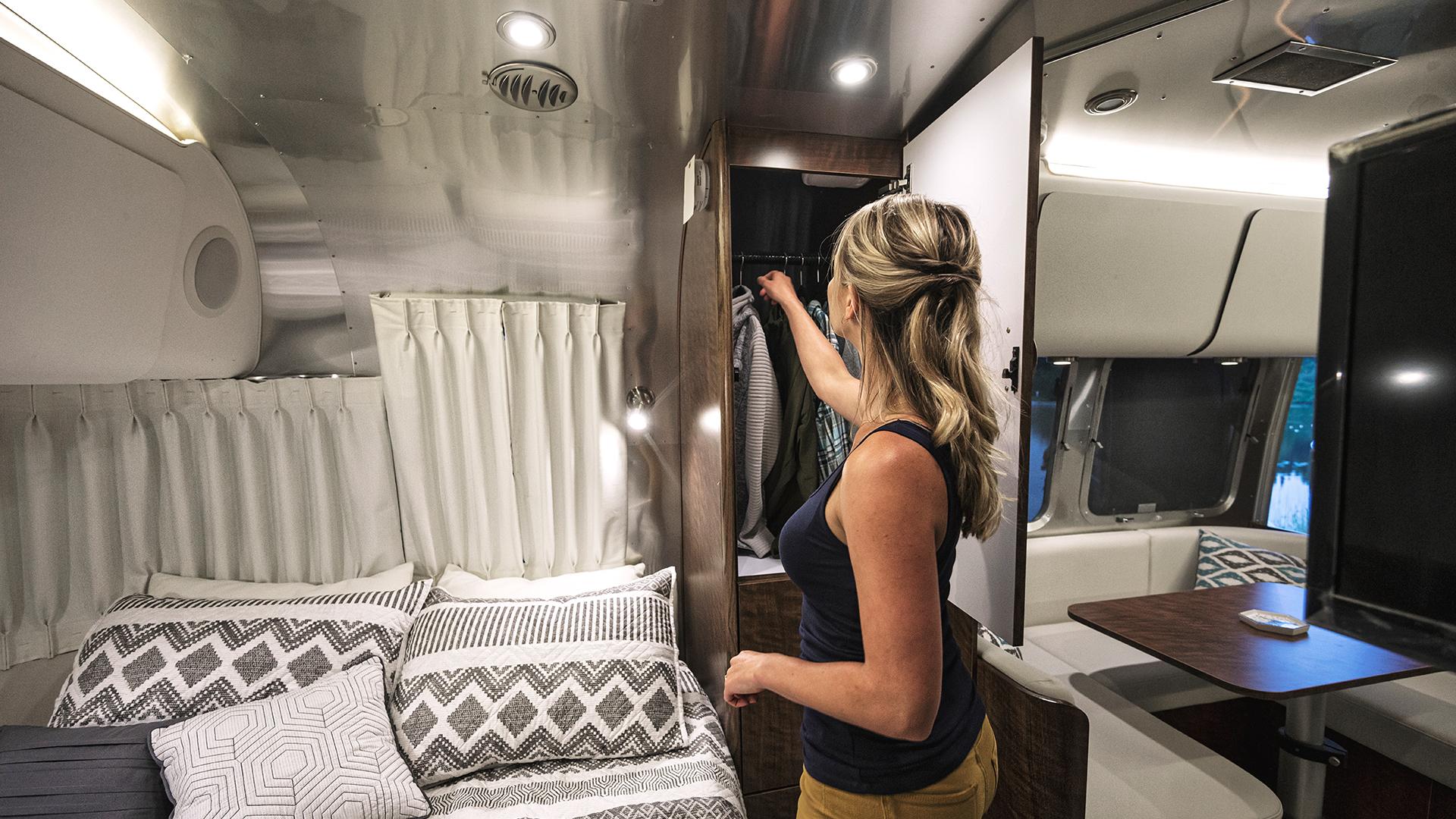
Let's take a 15-watt LED light bulb for example. Since we know the watts are 15 and we know the volts of the battery are 12, then we can divide the two and come up with our amps (15 Watts divided by 12 Volts = 1.25 Amps). So, running the light bulb consumes 1.25 amps per hour of use. If we continued to keep the light on we would reach the 50% capacity of our 100 amp-hour battery in about 40 hours (1.25 amps \ 50 amps = 40 hours). You can use this equation to check any of your 12-volt appliances.
12 Volt vs. 120 Volt Appliances
You can also use 120-volt AC appliances (things that plug into regular home electric outlets) from your 12 volt DC batteries by using a device called an inverter (check your user’s manual to see if your travel trailer or touring coach has one – they are included standard in many RVs). Almost all Airstream travel trailers and touring coaches offer a 1,000 watt pure sine wave power inverter as a standard feature. How does an inverter work? An inverter is a device that takes your 12V battery power and inverts to 110V so that you can power GFCI specific outlets in the trailer and the devices plugged into them (Blu-Ray player, T.V., etc.).
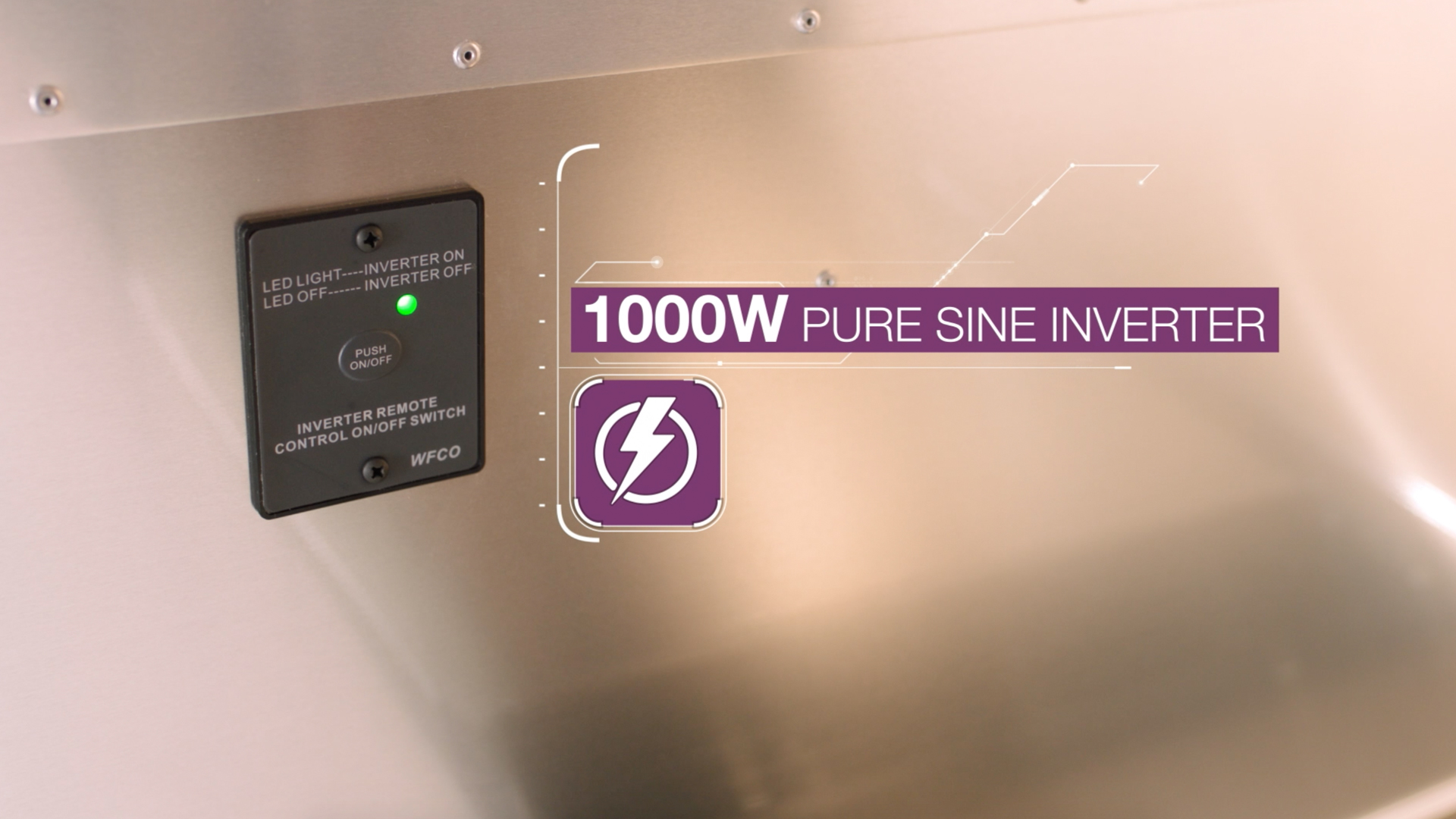
For the purpose of conserving energy, we’ll stick with talking about 12-volt appliances so we don't "waste" energy by converting it. Your inverter is also using energy just by being turned on. So, sticking with 12v power sources whenever possible is one way to stretch out those amp hours from your batteries. Things to keep in mind are phone chargers and laptop chargers. You can even get some larger appliances like TVs and refrigerators in 12 volt which are becoming a standard feature across the Airstream product lineup.
Additional Tips For Conserving Energy
Another energy-saving tip is to change out your incandescent light bulbs for LEDs. LEDs use far less energy than a standard bulb – up to 75 perfect less depending on the brand and type – and they put out a ton less heat! If you already have LEDs in your RV, consider putting in a dimmer switch. For example: Our LEDs on full power use about 2 amps per hour. If I turn them down to a couple of notches above the lowest setting, which is still plenty of light at night, they only pull a fraction of that. About .2 amps per hour. That means they would last 10 times as long on the same battery while being dimmed.
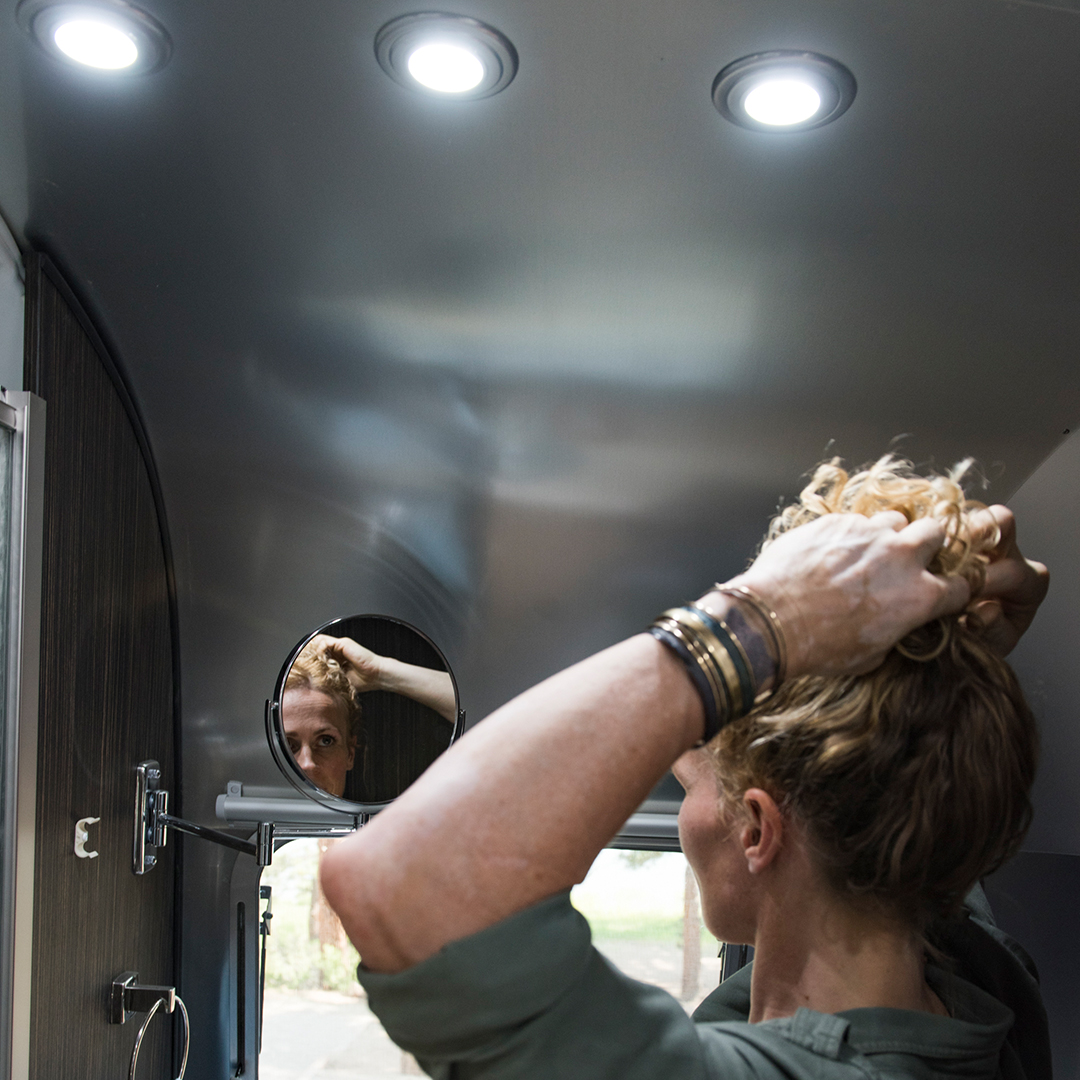
The largest power-hungry appliances are those that heat or cool: Things like air conditioning units, microwaves, or electric space heaters really draw some serious power. Not running those devices can drastically help conserve energy. One great energy conservation technique is using the sun to either help heat up your RV (or parking in the shade to help keep you cool). There are many places in the world where it's common for the outside temperatures to reach into triple digits. In the moments when your Airstream is fully exposed to the sun and there's no chance of shade coverage, using exterior windows shades (or even rugs) can make a world of difference to keep some of the heat from coming in through the windows.
On the flip side, in cold climates, be sure sure to park in the direct sun and use the natural heating of the greenhouse effect to trap some heat inside the cabin.
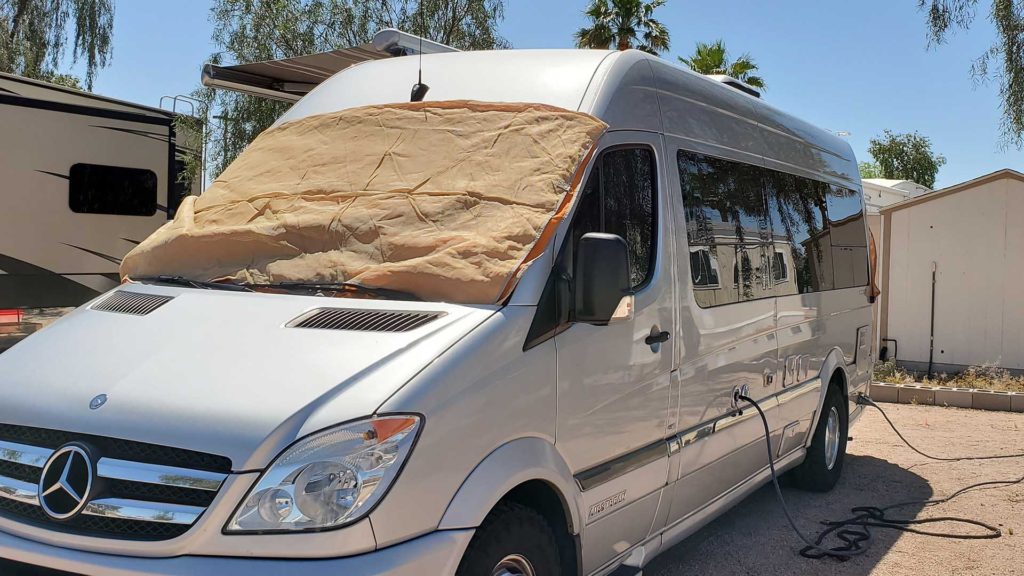
Speaking of heating and cooling, the more insulation you have the more stable your inside RV temperature. The least insulated part in an RV is usually the windows, so things like solar reflective material for window coverings can help greatly. Even making sure your window shades are closed – creating an extra thermal layer – will make a big difference.
DC or rechargeable fans are another great way to save power and although fans do cool, unlike air-conditioners, they only use a fraction of the power. Some small fans use only a few watts, while others use up to 100 watts. That’s a far cry from around 1800 watts that an air-conditioner can suck up. Using fans to cool you or help circulate heat is another way to save that power bill.
On the topic of rechargeable 12-volt items, investing in a USB power bank can make your small electronics last longer. These devices are available at Airstream Supply Company, often have solar charging capability, and you can always charge them while on shore power and then use them to recharge your USB items when you’re in conservation mode (or boondocking). This can save your RV house battery for more essential items like lights, fans, heat, and safety devices.
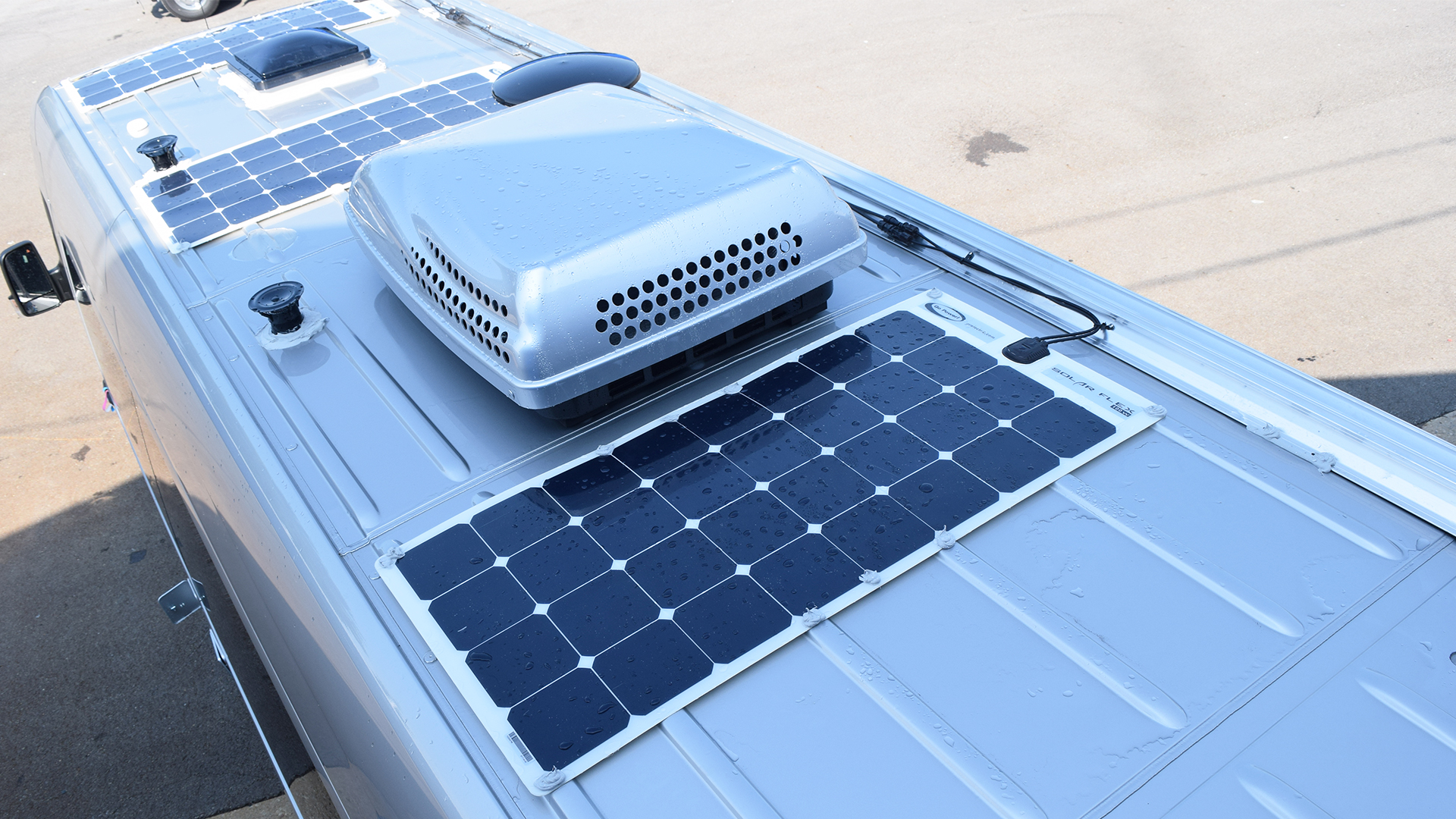
Lastly, always make sure to plan ahead and charge your devices and onboard batteries when you have access to shore power. This includes making sure everything is fully charged up the night before you leave your house to go on that big camping trip. Or, maybe at the campsite before you head out to your next destination. Also, don't forget about the benefits of charging while "Streaming". For travel trailers, the onboard batteries are getting fed some voltage through the towing cable. For our motorized models, the alternator is picking up the energy tab and giving the batteries some juice.









